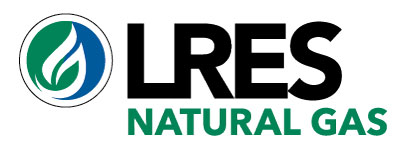Most natural gas safety rules are simple common sense. Still, it can be easy to overlook something, especially when you’re busy or in a hurry. We have provided these simple tips to help you and your family eliminate potential safety hazards.
Safety Basics Tips
- DO install a gas/carbon monoxide detector near the living and sleeping areas of your home. While an odorant is also added to natural gas to assist with the detection of a gas leak, LRES encourages the use of a consumer gas detector that detects carbon monoxide, methane and propane.
- DO make sure that any unused gas lines in your home that previously provided gas to an appliance or furnace are securely capped. Contact a qualified plumbing and heating contractor to assure that no gas will leak from the unused line. Once the line is securely capped, you can rest easier knowing that your home is safe!
- DO leave at least 18 inches of clearance around your gas furnace and water heater, and at least six inches around gas stoves and clothes dryers. Always follow manufacturer clearance installation instructions.
- DO keep paints, papers, aerosol sprays and other flammables away from gas appliances.
- DO make sure the vent hood, pipes and flues on your gas appliances aren’t blocked, cracked or corroded.
- DO keep children and pets away from utility equipment, including meters.
- DO keep your meter free of ice and snow during the winter.
- DON’T store or stack boxes, laundry or other materials around the base of a gas appliance.
- DON’T let kids play on or around gas equipment, including meters and pipes.
- DON’T wear long sleeves around a gas stove, and keep towels and potholders away from the open flame.
- DON’T try to use a gas oven or range to heat a room.
- DON’T disguise transformers or meters with paint or bushes – a utility worker might need to work safely around it or find it quickly in an emergency.
- DON’T tamper with an electric or gas meter (it’s dangerous and illegal).
